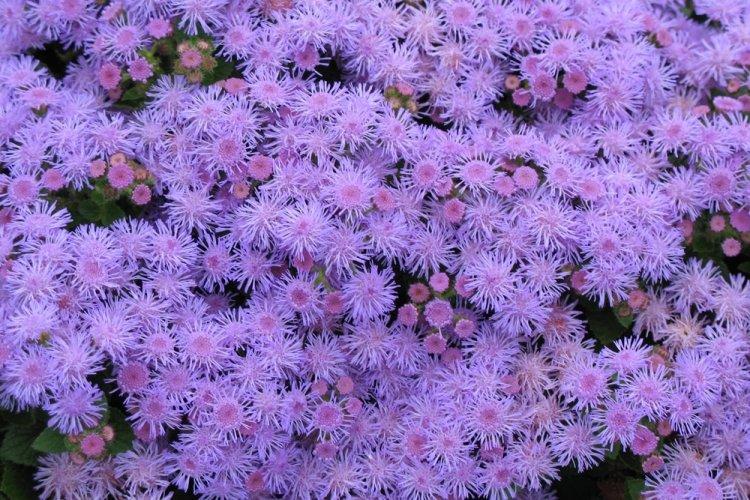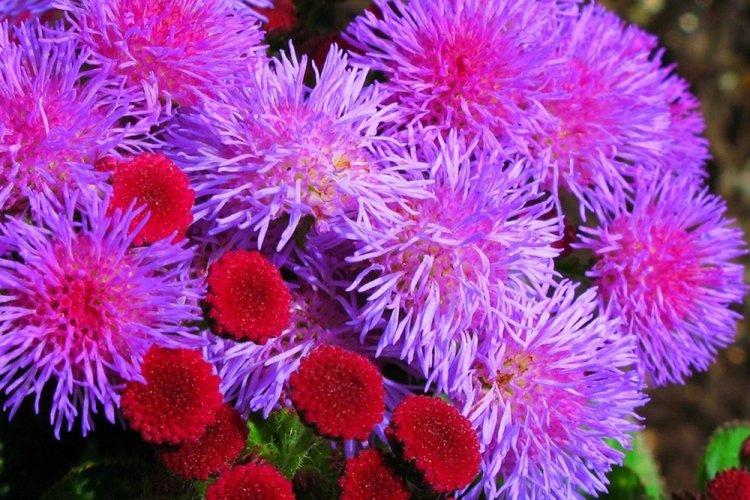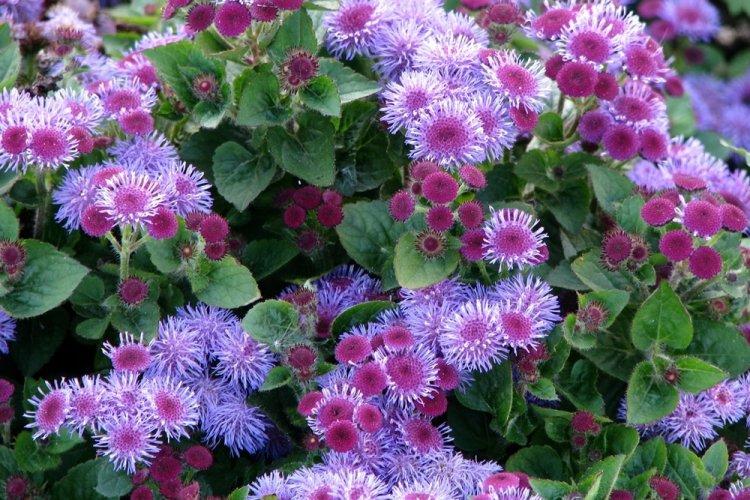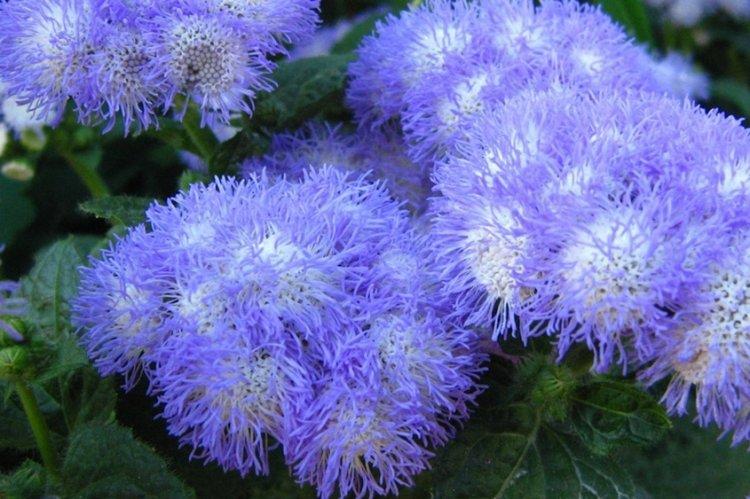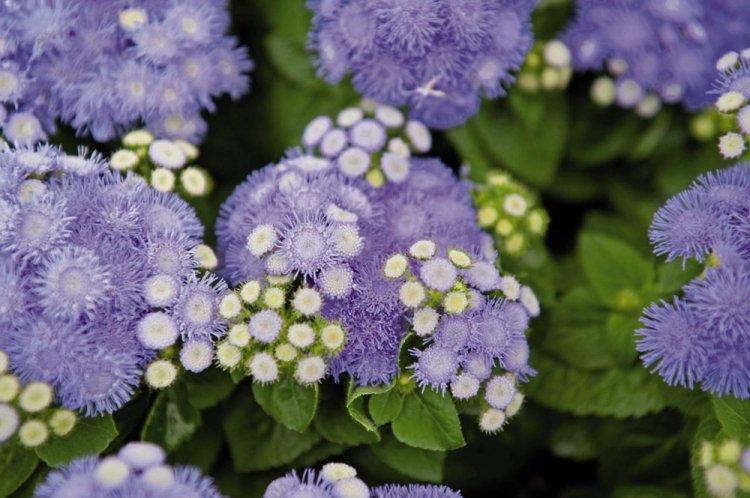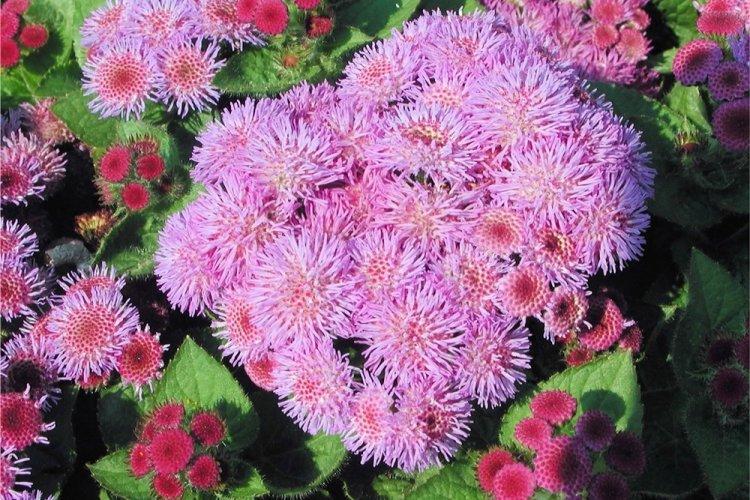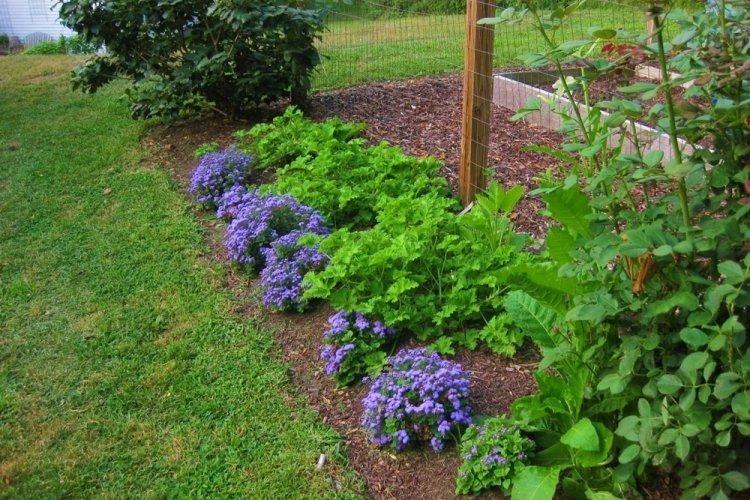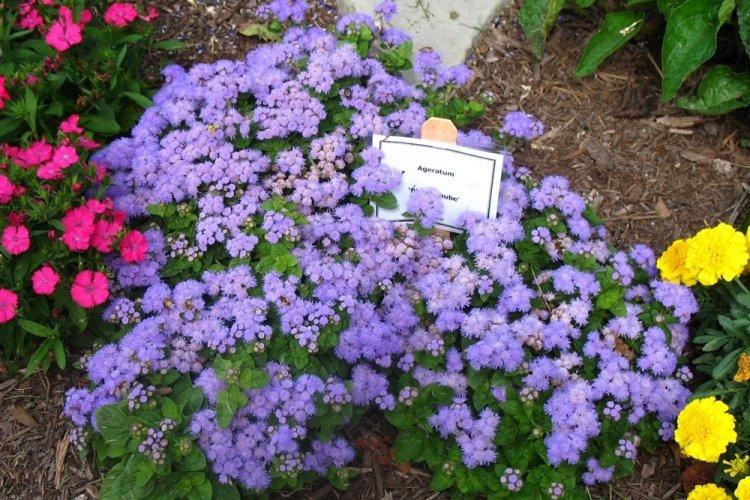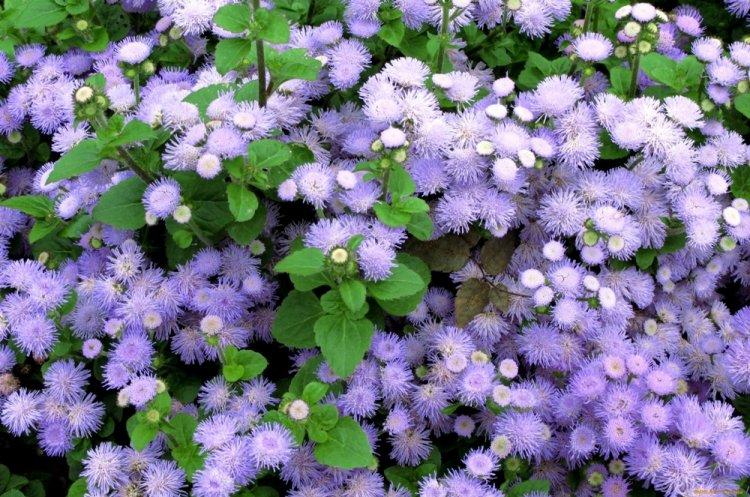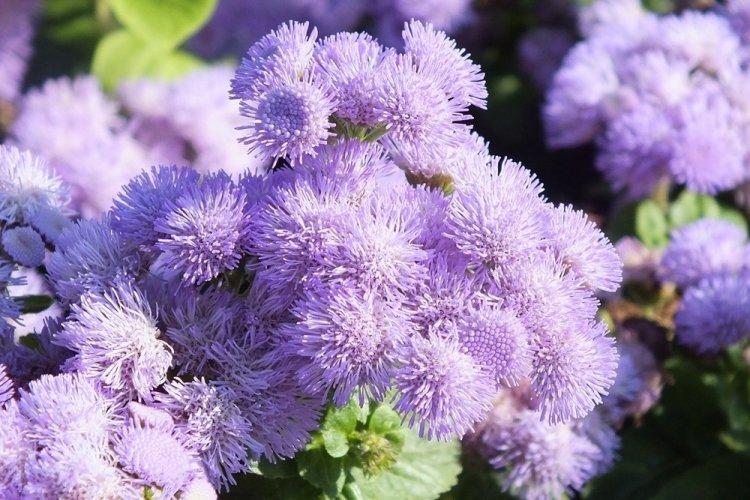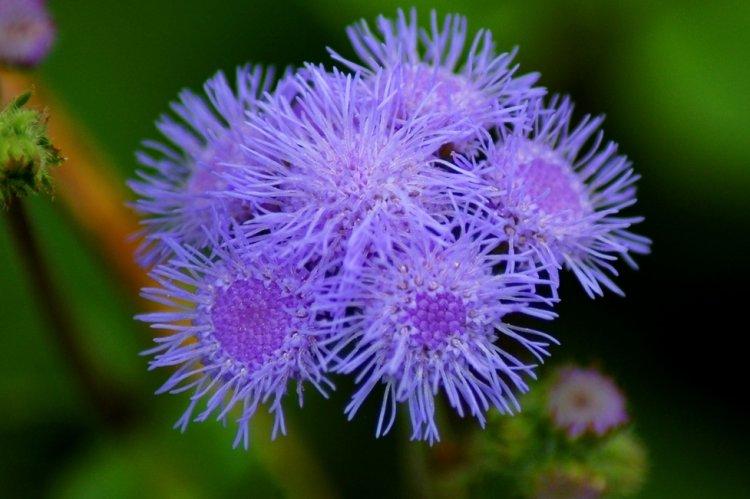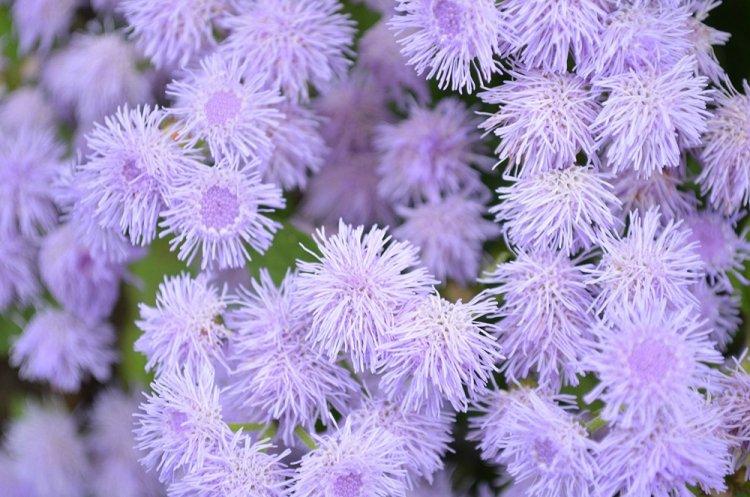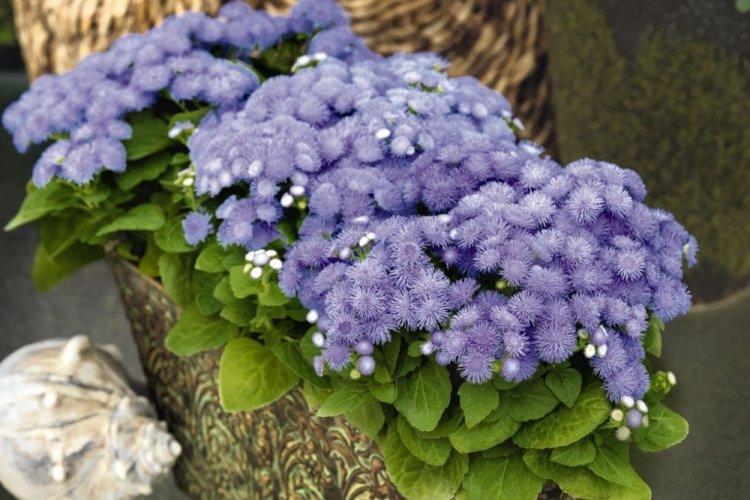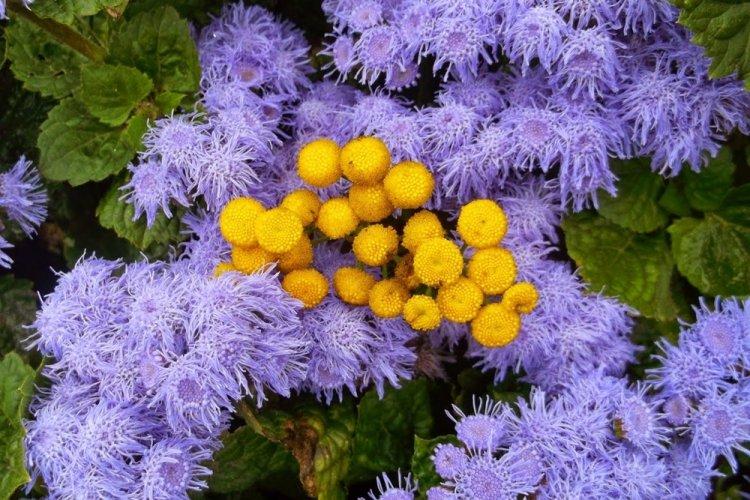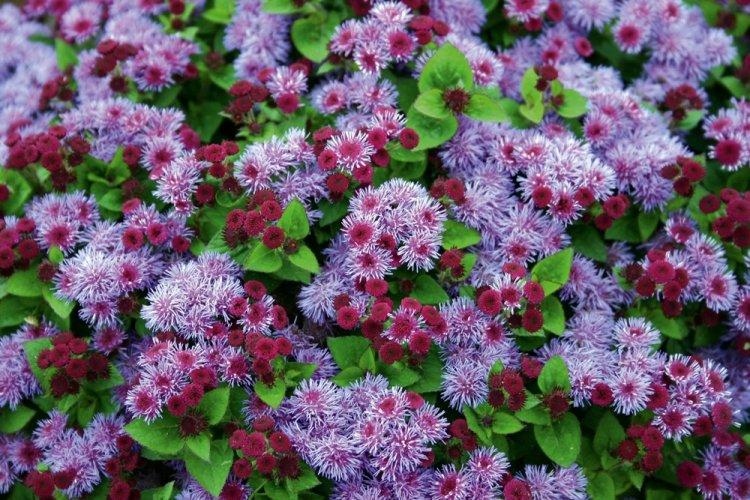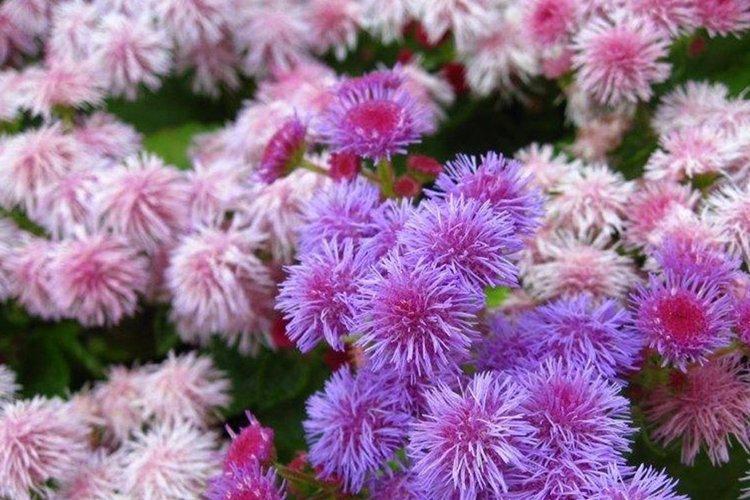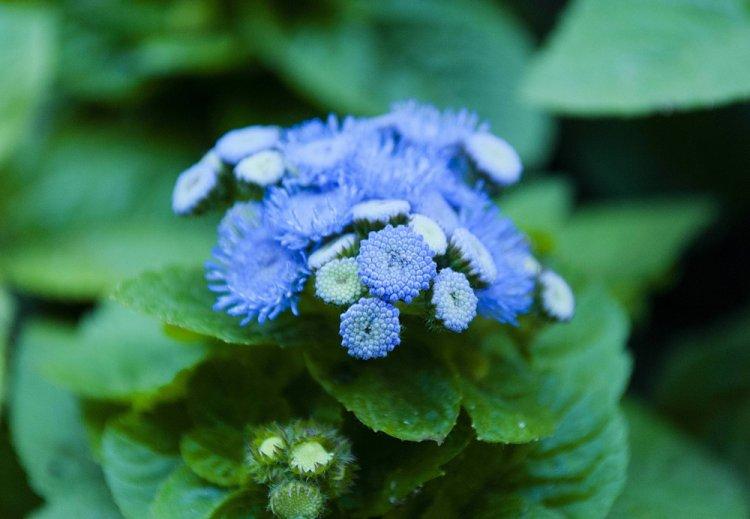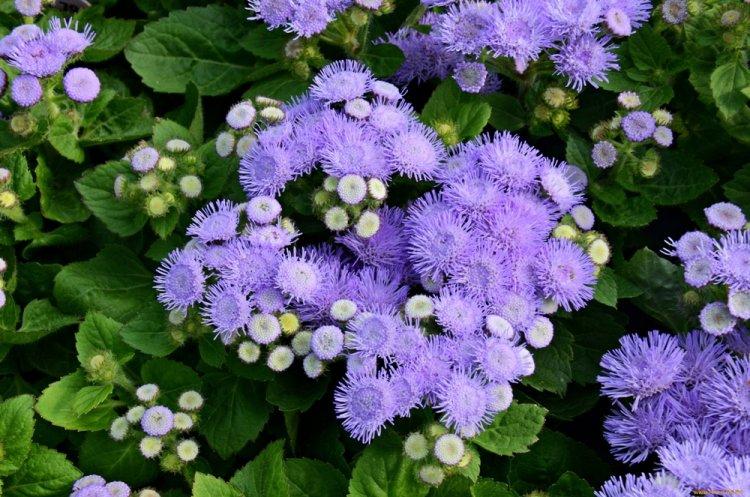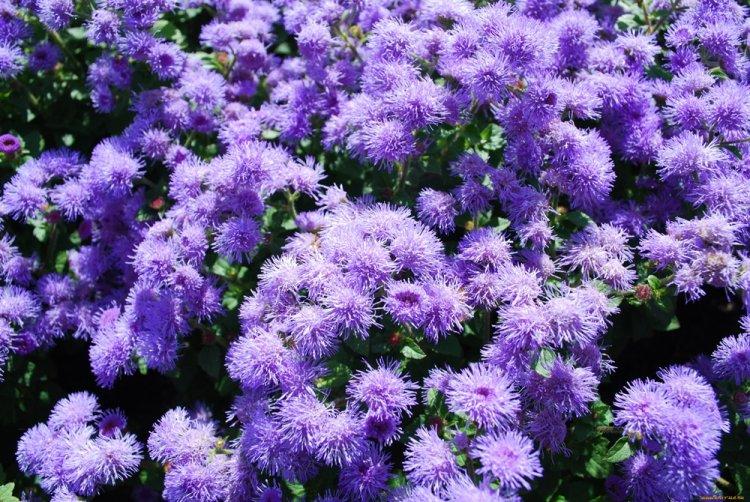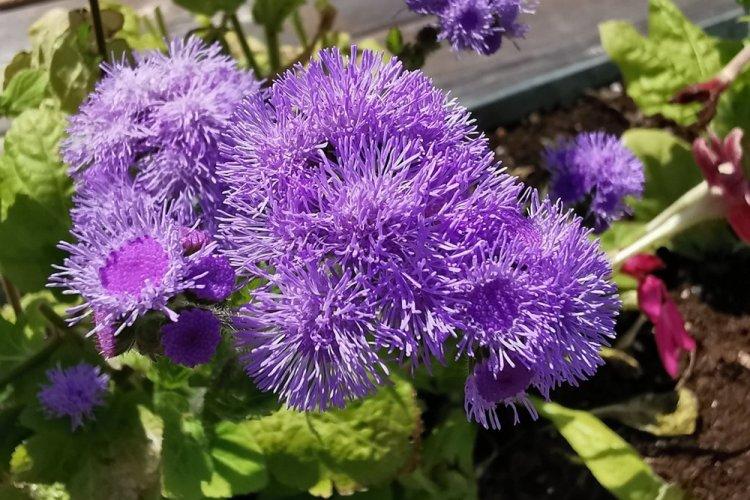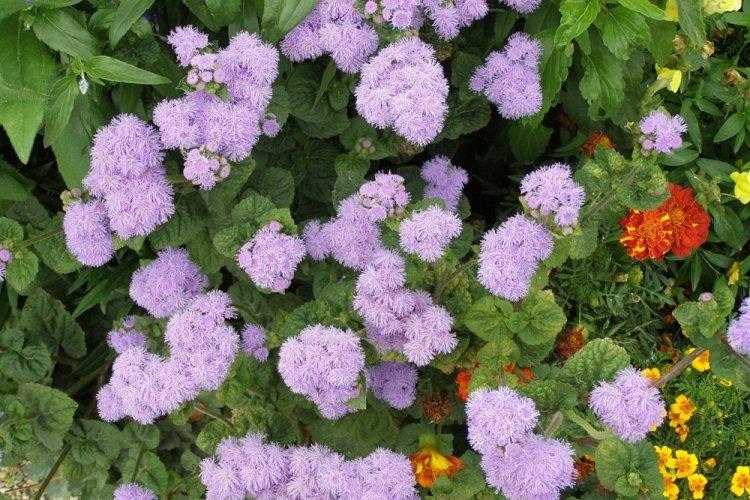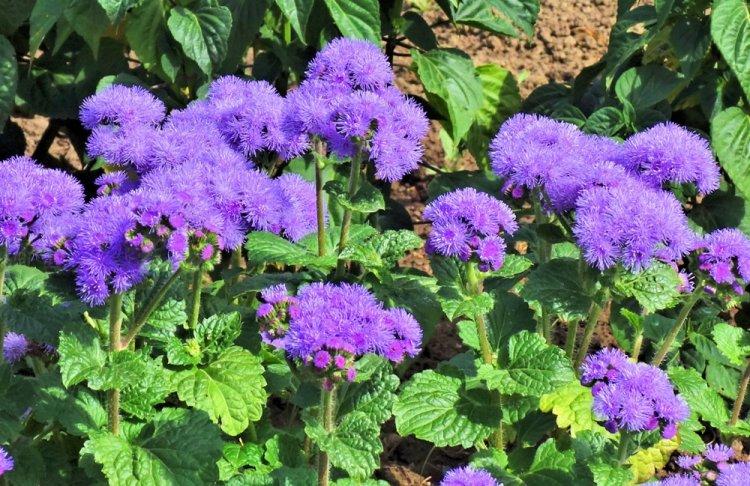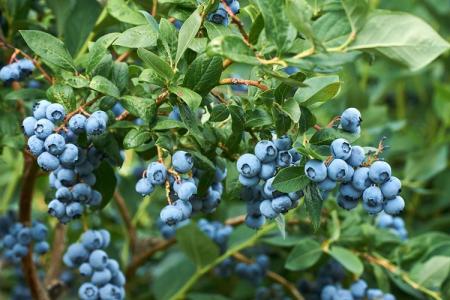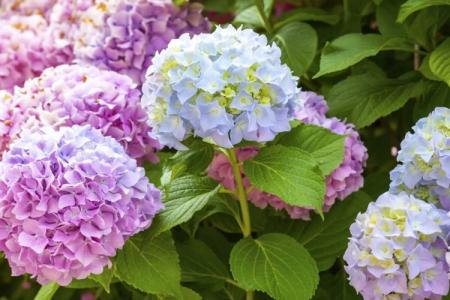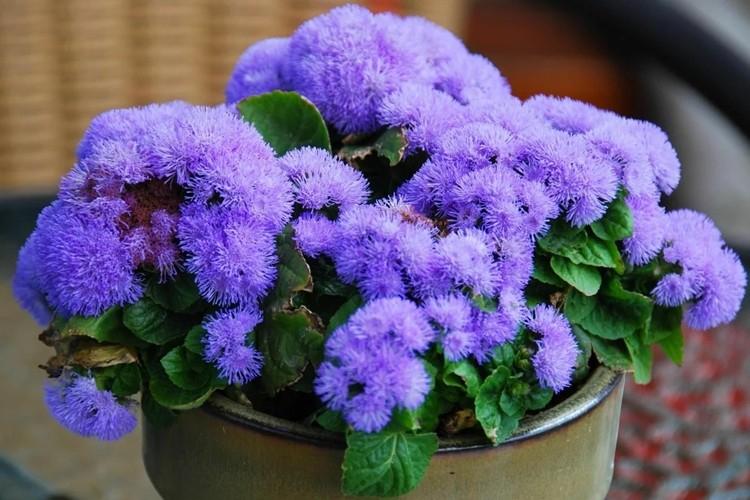
Small and bright, long-lived asters that can be found in gardens and on balconies are ageratum. Compact fluffy bushes do not leave indifferent flower growers around the world. Their beauty is very modest, but also very elegant at the same time! And now we will tell you what types of ageratum exist and how to care for them!
general information
Ageratum came to us in the nineteenth century from America and East India. Its name translates as "ageless", and this is true, because during the year the appearance of the bush hardly changes. When cut, the flowers remain fresh, attractive and fragrant for a long time.
The shape of the leaves depends on the variety - oval, triangular and diamond-shaped, but they are always small and jagged. The longest and largest species stretch up to 60 cm, and the smallest - up to 10. Small flowers of all shades of blue and purple are collected in dense elastic inflorescences. Each individual flower resembles a basket up to one and a half centimeters in diameter.
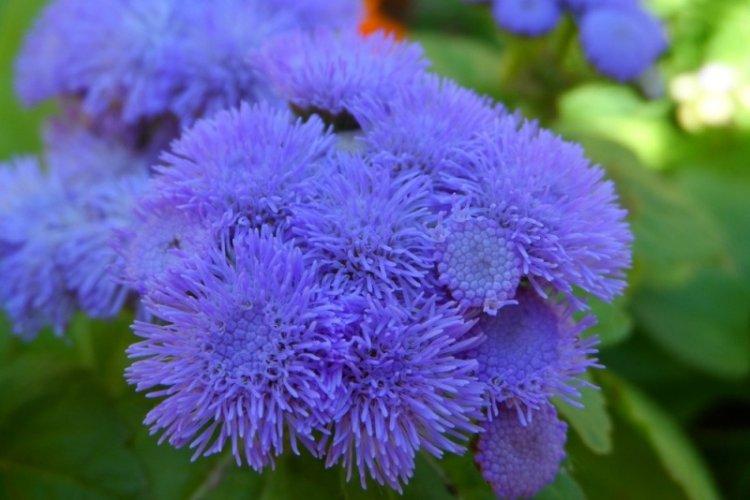
Types of ageratum
Ageratums are quite similar to each other, although in fact there are about 60 types of them. Most of them are the very lilac or blue pompons against the background of bright green foliage.
Ageratum Blaue Kappe
A graceful low ageratum with lilac-blue loose inflorescences stretches up to 20-30 cm. This is a late variety that begins to bloom closer to July and decorates the flower bed until October. Globular bush with dark green shoots and leaves.
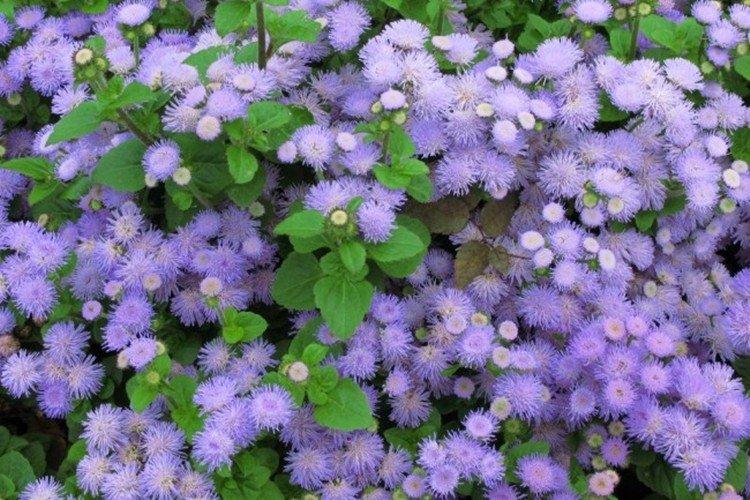
Ageratum Blue Mink
Ageratum Blue Mink is completely different in appearance from its monochromatic congeners. He has a columnar shrub up to 30 cm with strong thick shoots and few leaves. Large baskets sometimes exceed 2 cm in diameter.
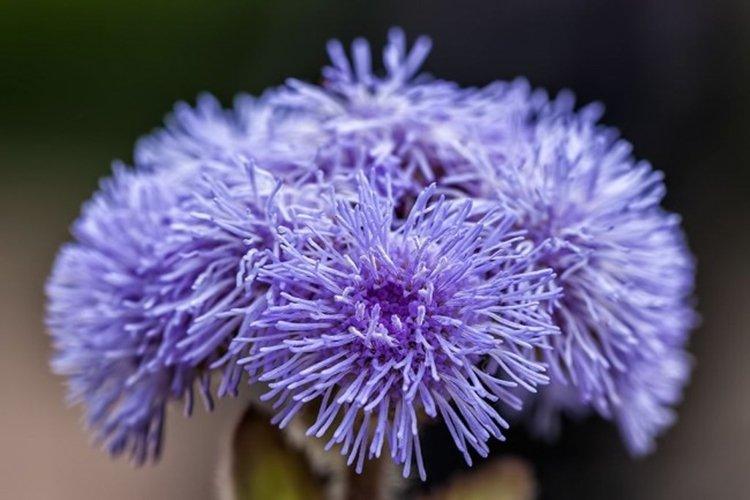
Ageratum Pink Ball
It is a pink ageratum of small height - about 20 cm. It has small leaves, but there are so many of them that they create the illusion of volume. Loose inflorescences reach 5 cm in diameter and are collected from small fragrant pink flowers.
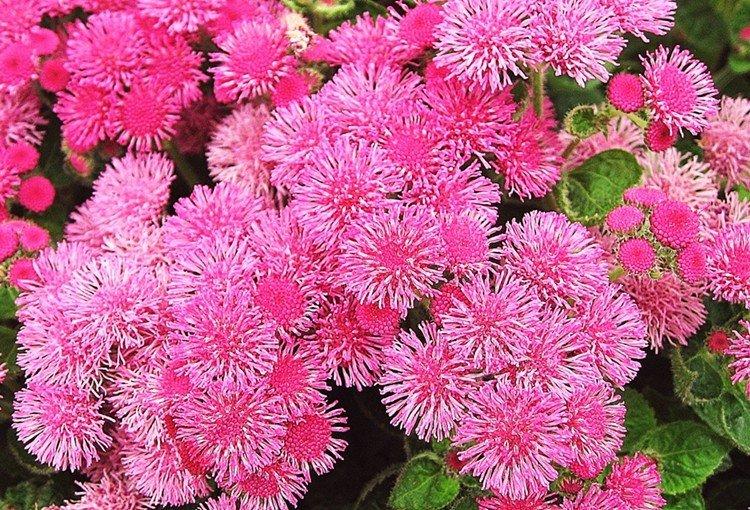
Ageratum Alba
This is a rare ageratum variety with dense white inflorescences, as indicated by its name. Compact bushes extend up to a maximum of 20 cm. They have branched stems, neat oval leaves with a rough surface and complex corymbose inflorescences.
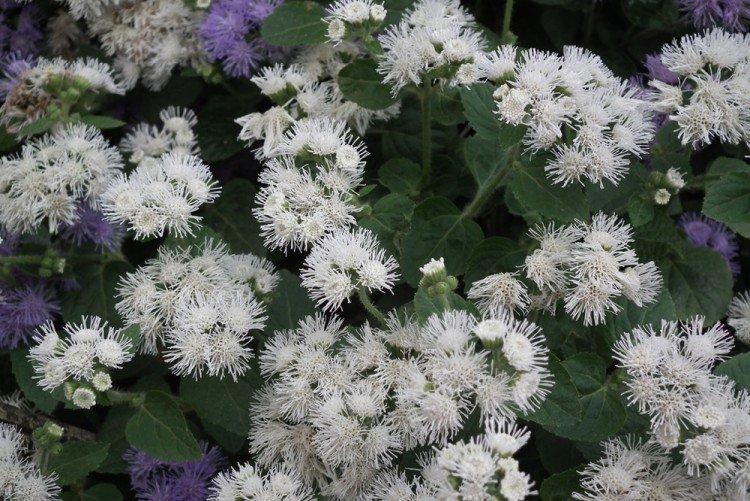
Ageratum Summer Snow
Another white variety with dense dense inflorescences that really resemble white balls during peak season. This ageratum is especially loved by florists and landscape designers, because it fits amazingly into any composition.
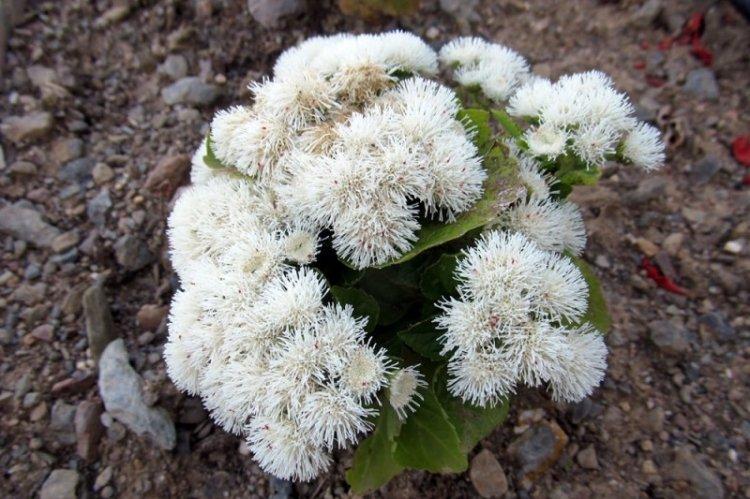
Ageratum Blausternchen
This is one of the smallest varieties among decorative ageratums. A compact bush grows up to a maximum of 15 cm, and more often even less. A light purple bloom can be seen on dark shoots, against which blue-lilac flowers look even brighter. Tiny baskets up to a centimeter are collected in loose inflorescences.
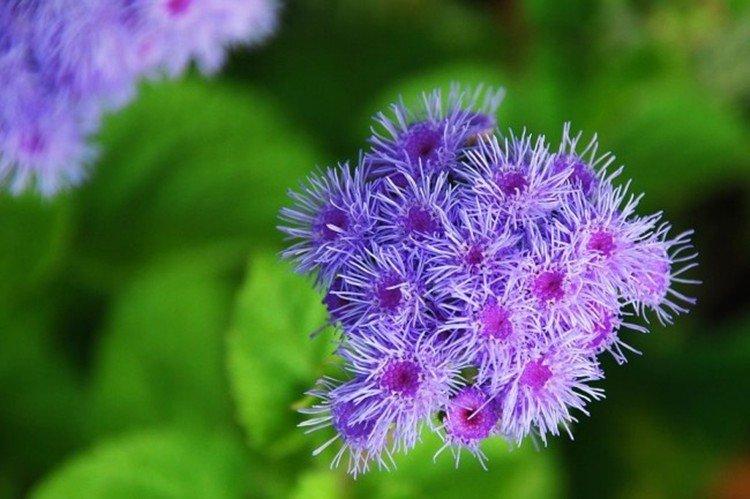
Ageratum Blue Mink
The variety got its name due to the unusual bluish tone of flowers, which resembles the play of mink fur. Ageratum is rather small - up to 25 cm, but the inflorescences are large - 8 cm. They cover the flower almost completely, which makes it good both in carpets and solo.
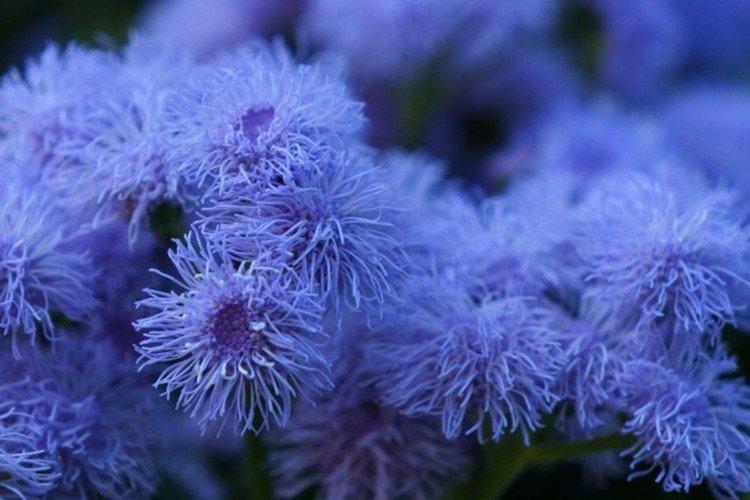
Ageratum Kalinka
A rare and little-known subspecies, it is notable for its expressive red tint. It can stretch up to 50 cm, and the bush is densely covered with large fluffy flowers. Abundant and long flowering is one of the main characteristics of the variety.
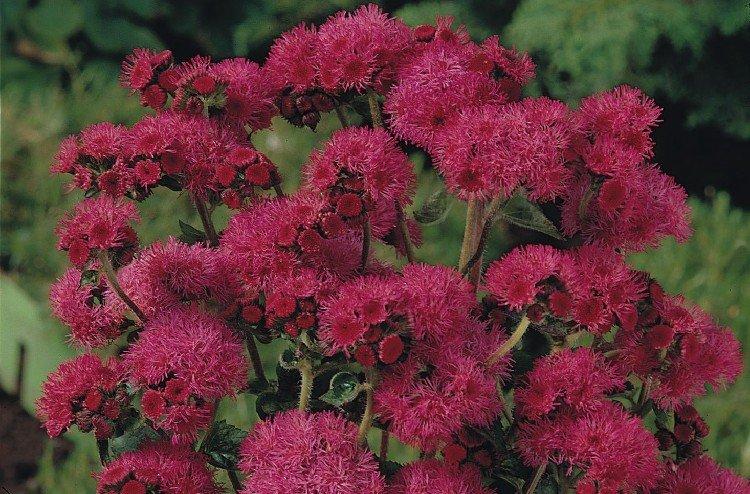
Ageratum care
Ageratum vitally needs warmth, so we grow it like an annual. The flower will decorate any flower bed or carpet arrangement, but it looks just as good in large boxes or pots. Feel free to combine ageratum with calendula, marigolds or other flowers of a similar shape and size.
Temperature and lighting
Ageratum definitely needs a bright sunny place, otherwise it will bloom poorly and poorly. The outdoor temperature regime in the warm season is quite suitable for him.So the optimal conditions for seedlings are after the last and before the first frosts.

Watering
You definitely need to find a fine line between abundant watering and overflow of ageratum. He loves water, but very easily dies from excess moisture due to decay. Each time after watering, pull out all the weeds and loosen the soil.
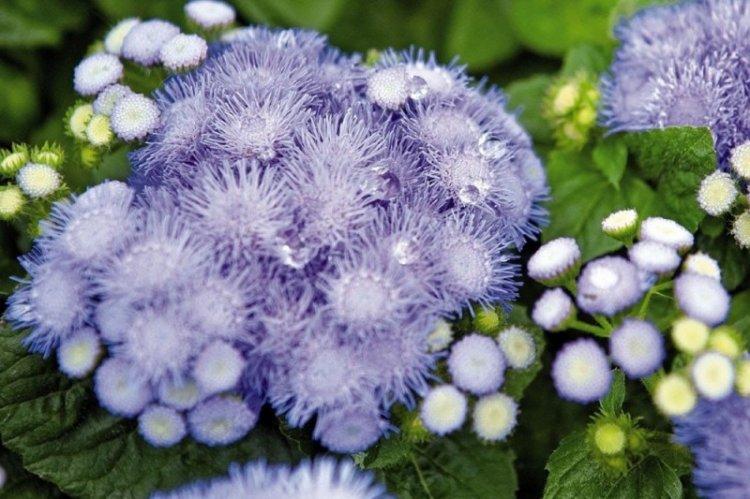
Fertilizers and feeding
Seedlings of ageratums are fed about once every 2-3 weeks. In addition to mineral mixtures, use humic and mullein infusion, but give up manure - this is fraught with disease. Don't overfeed the plant as it will start to grow leaves instead of flowers.
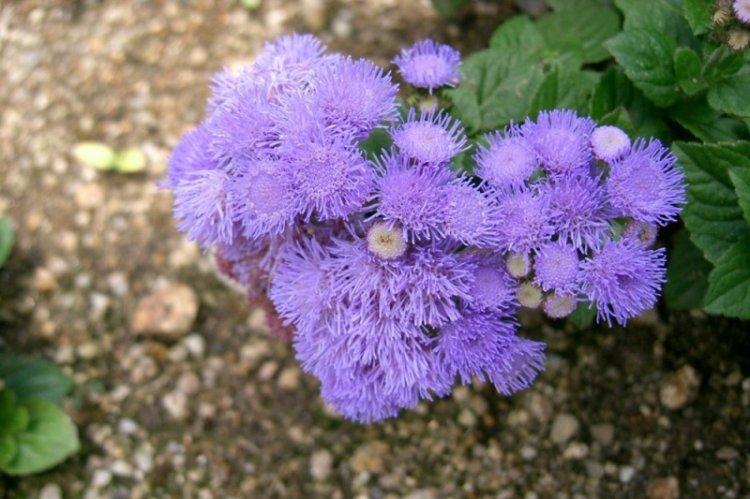
Planting and breeding
In the second half of March, choose a spacious box and fill it with a mixture of peat, humus and sand. Spread the seeds evenly over the surface and sprinkle with a thin layer of the same soil on top. Cover the drawer with plastic wrap and leave warm with daily ventilation for 2 weeks.
When the seedlings rise and let the first full-fledged leaves in, plant them more freely. And by the second seedlings, dilute them in different cups or small pots. Consider that ageratum seedlings love moist soil, but dry air.
Before planting in the ground, take the seedlings out for a couple of weeks in fresh air for adaptation. Transplant them when the temperature stably stays above 10-12 degrees, so that there is definitely no frost. Plant the bushes at a distance of 10-15 cm - and in about a month and a half they will bloom.
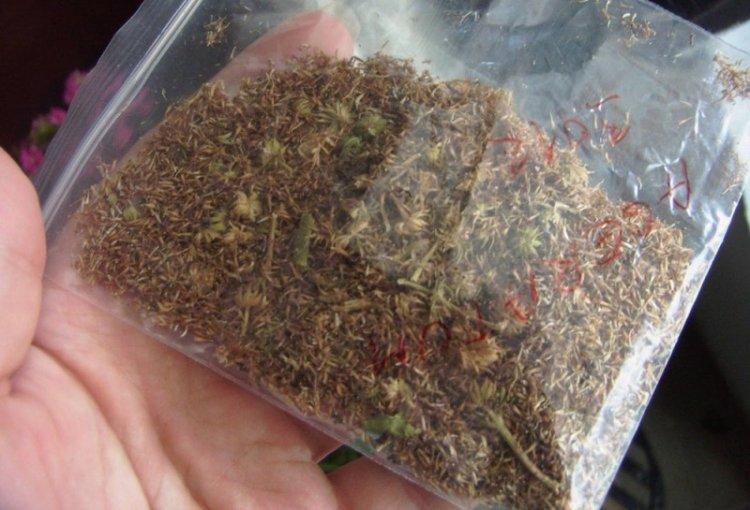
Pruning
In order for the ageratum to bloom beautifully, intensively and evenly, it must be periodically trimmed. After such prevention, the flower will begin to grow even more actively and faster. Make sure that there are only a few internodes on the shoots.
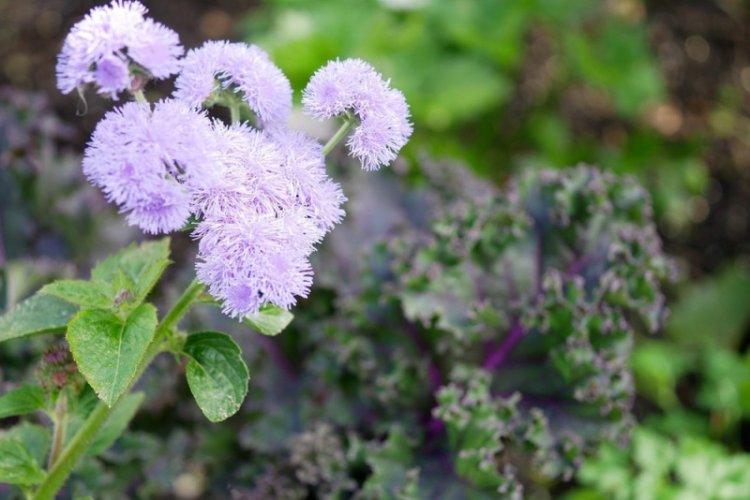
Wintering
Outdoors, ageratum will not survive even the warmest winter with good cover. Lush and healthy bushes can be dug up and planted in pots. At home on the balcony, they will flourish all autumn and part of winter, and closer to spring you can cut cuttings from them for young seedlings.
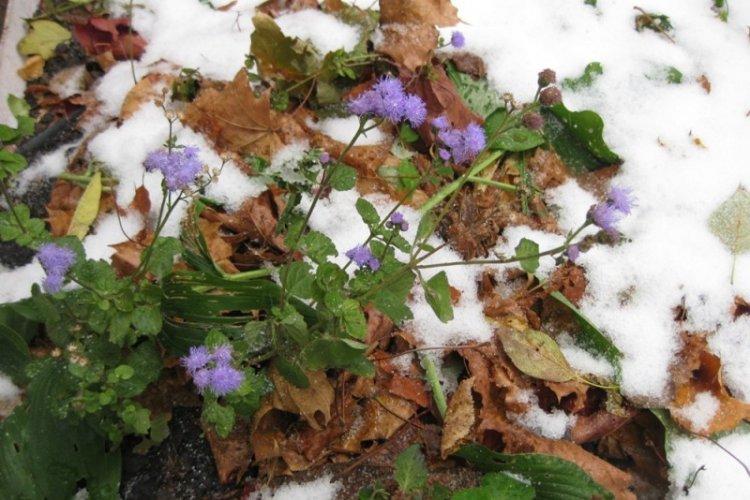
Pest and disease control
Ageratums are very vulnerable to disease, and this is their main drawback, associated mainly with the same climatic features. If the root system is affected by rot, do not try to save diseased bushes. Quickly and decisively destroy them completely in order to save the rest.
Minimize the risk of rot and fungus by planting seedlings only in light, drained soil. Avoid overflow and stagnation of water and check the condition of the root part of the stems.

With improper care, bacterial wilting develops. Less often, cucumber mosaic appears - an infection that quickly spreads to all seedlings. It is tolerated by pests, weeds and even cultivated ornamental varieties.
Pests in the garden include nematodes, scoops and whiteflies. But spider mites can appear even in the greenhouse or on the balcony, if you transfer the flower to winter. Pick off all infected leaves and use insecticides.
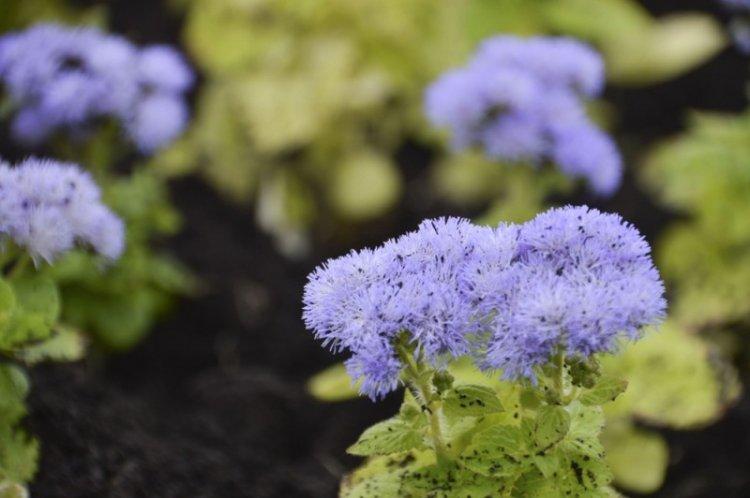
Ageratum - photo
In nature, ageratum is an ageless perennial. Although this is impossible in our latitudes with frosty winters, you can contemplate such beauty from the first summer days to the very frost!

